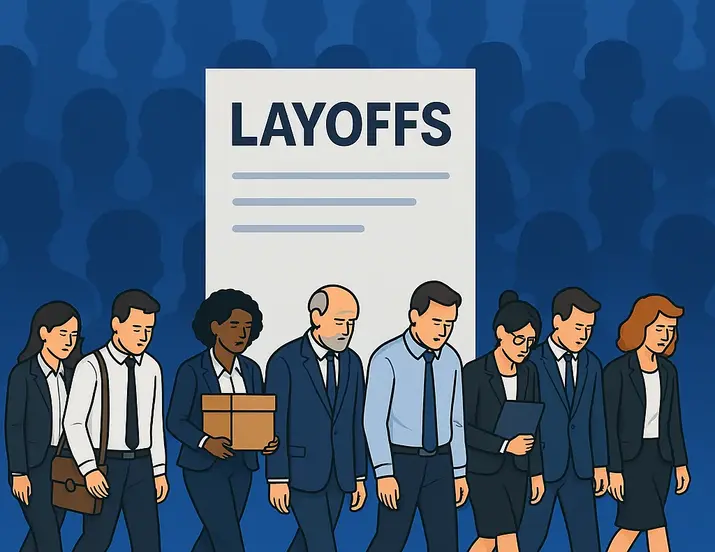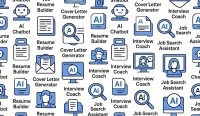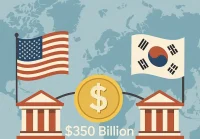It began with a tweet — a simple list of numbers and names. UPS: 48,000. Amazon: 30,000. Intel: 24,000. Fifteen companies, hundreds of thousands of jobs, and one unmistakable message: the labor market is breaking.
At 4:31 p.m. on October 28th, The Kobeissi Letter posted the list that would soon trend across every major news platform. “The labor market is clearly weakening,” it concluded. For many Americans, the numbers were more than statistics — they were livelihoods, mortgages, and dreams slipping through spreadsheets.
A Shockwave Across Industries
The scale of layoffs in late 2025 is unlike anything since the early days of the pandemic. But this time, there’s no global shutdown to blame — only a tightening economy, AI-driven restructuring, and cautious investors.
UPS’s decision to cut 48,000 jobs came first, justified as a “logistics optimization initiative.” Insiders say automation now manages more than half of its sorting facilities. “It’s faster, cheaper, and it doesn’t need health insurance,” said a former regional manager from Chicago who spoke under condition of anonymity.
Amazon’s cuts were next — up to 30,000 employees, mostly from corporate and warehouse divisions. The company cited “efficiency goals” as e-commerce growth slowed and AI tools took over several white-collar functions, from product listing optimization to marketing analytics.
Intel’s 24,000 layoffs hit the tech sector hardest. “We’re investing in AI chips but pulling back in everything else,” said Intel’s CEO during a tense investor call. “Our workforce must evolve with our products.”
From consumer goods giants like Nestlé and Ford to consulting powerhouses like Accenture and PwC, the story was the same: too many people, not enough profits.
The Human Toll
Behind every layoff figure lies a human story.
In Atlanta, 37-year-old logistics coordinator Maria Ortiz packed her desk at UPS for the last time. “They said I’d been replaced by a routing algorithm that ‘improves efficiency by 23%.’ I trained that system for two years,” she said, fighting back tears.
Maria’s husband, a truck driver, recently saw his routes reduced because of autonomous delivery fleets. Together, their family income has been cut nearly in half. “We were middle class one month and struggling the next,” she said.
At Amazon’s Seattle headquarters, hundreds of workers learned their fates over video calls. “It was surreal,” said one engineer, who’d been working on internal AI systems ironically designed to streamline workforce planning. “We built the thing that predicted our own jobs weren’t necessary anymore.”
Meanwhile, the consulting sector — long seen as recession-resistant — has also been hit. PwC and Accenture, two of the “Big Four,” have trimmed thousands of roles, citing reduced demand from clients cutting costs. “When the giants start saving money, the first thing they cut is advice,” noted one industry analyst.
A Broader Economic Pattern
Economists warn that the layoffs may signal something deeper than cyclical cost-cutting. “We’re entering what I call the ‘automation adjustment,’” said Dr. Lina Cheng, labor economist at MIT. “It’s the phase where AI doesn’t just assist humans — it replaces them outright.”
In previous decades, technological disruption created new job categories as fast as it eliminated old ones. The Industrial Revolution replaced farm work but spawned factory jobs; the Internet killed typing pools but created social media marketing.
But this wave is different. The speed of automation, combined with corporate pressure to maintain shareholder returns, means job creation is lagging far behind job destruction.
“White-collar redundancy is the new blue-collar story,” Cheng added. “AI can code, design, write reports, even analyze markets. The question is: what’s left for humans to do?”
The Bureau of Labor Statistics reports that U.S. unemployment rose to 6.1% in October, up from 4.7% in July. Job postings in logistics, tech, and finance have dropped by more than 40% compared to last year. Meanwhile, the number of Americans applying for freelance or gig work has reached a record high.
A Turning Point for Workers
In cities across the country, newly unemployed professionals are forming what online communities call “Layoff Networks.” On Reddit, Discord, and LinkedIn, these groups share resources, job leads, and emotional support.
One such group, Reskill 2025, has over 200,000 members. Its founder, a former Salesforce manager laid off earlier this year, describes it as “a digital support group for an economy that forgot us.”
Members trade information on affordable AI courses, remote work opportunities, and government reskilling grants. “It’s not just about finding work,” said the founder. “It’s about redefining what work means in a world where stability is gone.”
The irony isn’t lost on participants: the same AI tools that replaced them are now helping them write resumes, apply for jobs, and even start small businesses.
Corporate Narratives and Public Backlash
Corporations insist these layoffs are strategic rather than desperate. In earnings calls, CEOs point to “cost alignment,” “operational recalibration,” and “AI-enhanced productivity.”
However, the public sentiment is souring. In an era where executive bonuses remain untouched and share buybacks reach record highs, many view these cuts as emblematic of a widening inequality.
“The narrative is always the same — innovation, efficiency, progress,” said Dr. Malcolm Reed, sociologist at the University of Michigan. “But progress for whom? We’re watching the creation of an economy where capital scales infinitely, but human labor is treated as a temporary inconvenience.”
A poll by WhatJobs Research found that 68% of Americans now fear losing their jobs to automation in the next five years — up from 45% just two years ago. The anxiety isn’t confined to factory floors; it’s spreading through accounting firms, marketing agencies, and even journalism.
Government and Industry Response
The federal government has pledged to “monitor labor volatility,” though concrete policy remains elusive. A proposed bill — the Workforce Stability Act — aims to incentivize companies that retain workers during automation transitions. Critics, however, call it “too little, too late.”
Meanwhile, a handful of companies are taking a different approach. Microsoft, despite cutting 7,000 jobs, announced a $500 million investment in retraining programs. Ford is offering buyouts and free AI retraining to 3,000 affected employees.
But experts caution that retraining isn’t a silver bullet. “You can’t turn a warehouse worker into a data scientist overnight,” Cheng said. “And even if you could, there aren’t enough AI jobs to absorb everyone.”
A New Normal
As 2025 draws to a close, the message from boardrooms is efficiency; from workers, uncertainty. The layoffs, though shocking, may be just the beginning of a long adjustment period.
For millions of Americans, the question is no longer “Where will I work next?” but “Will there even be work to do?”
And for policymakers, the challenge is equally daunting: how to sustain an economy that no longer needs every citizen’s labor — but still must support every citizen’s life.
For now, the numbers continue to grow, one press release at a time.
Epilogue: The List That Started It All
When The Kobeissi Letter’s post went viral, it wasn’t just because of the companies listed — it was because the list itself felt like a warning.
Each line read like a sentence in a larger story of transformation — one that will define not only 2025 but the next decade of human work.
And as the world scrolls, likes, and reposts, the workers behind those numbers are still waking up every morning, opening laptops or job boards, and trying — somehow — to start again.




